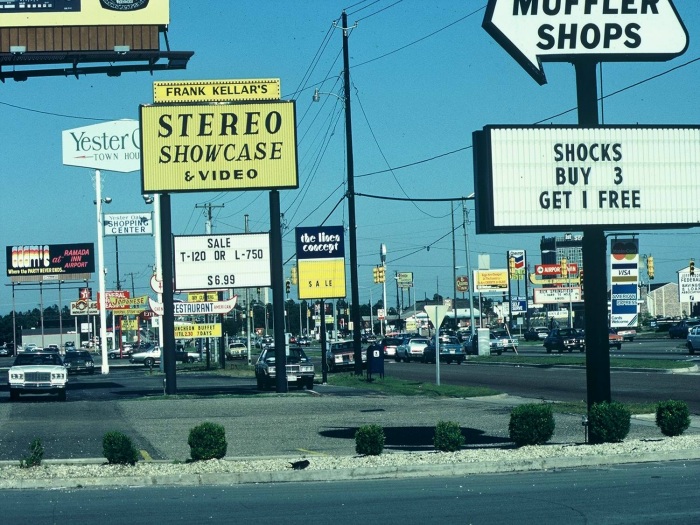
We are pleased to publish the following article by Edward T. McMahon, former president of Scenic America and renowned placemaking and urban planning expert. The article was originally published by PlannersWeb in 2013, and is part one of an eight-part series on placemaking and community development.
During the development boom of the 1980’s, Time Magazine had a cover story article about what they called “America’s growing slow-growth movement.” The article began with a quote from a civic activist in Southern California, who said “we were in favor of progress, until we saw what it looked like.” Looks count! Aesethics matter!
Mark Twain put it this way, “We take stock of a city like we take stock of a man. The clothes or appearance are the externals by which we judge.”
Over 80 percent of everything ever built in America has been built since about 1950 and a lot of what we have built is just plain ugly. There are still many beautiful places in America, but to get to these places we must often drive through mile after mile of billboards, strip malls, junk yards, used car lots, fry pits, and endless clutter that has been termed “the geography of nowhere.”
The problem is not development, per se; rather the problem is the patterns of development. Successful communities pay attention to where they put development, how it is arranged, and what it looks like.
The image of a community is fundamentally important to its economic well-being. Every single day in America people make decisions about where to live, where to invest, where to vacation and where to retire based on what communities look like. Consider tourism, for example. The more any community in America comes to look just like every other community the less reason there is to visit. On the other hand, the more a community does to protect and enhance its uniqueness whether natural or architectural, the more people will want to visit. Tourism is about visiting places that are different, unusual, and unique. If everyplace was just like everyplace else, there would be no reason to go anyplace.
Successful communities pay attention to aesthetics. Typically they control signs, they plant street trees, they protect scenic views and historic buildings, and they encourage new construction that fits in with the existing community.
Whether you’re in a big city or small town, dignified, well-designed public buildings can also make a huge difference. They also set an example for developers showing that the community truly believes in a high quality built environment.

Two public buildings in the small city of Port Royal, South Carolina (population, 11,000) set the standard. Port Royal’s city hall is above left; the fire station is above right (and, yes, even buildings like fire and police stations can and should be well-designed).
 Scenic America’s first president Ed McMahon developed an interest in land use planning and landscape conservation as a result of serving a tour of duty in Germany as a young soldier in the US Army. A native of Birmingham, Alabama, Ed spent two years traveling throughout Europe from his post at US Army headquarters in the postcard-perfect town of Heidelberg, Germany. Over the course of Ed’s tenure, Scenic America worked closely with local and state governments to pass sign ordinances, tree protection legislation, and other measures to protect community character and identity. We are proud to honor Ed’s legacy by publishing his catalog of industry-renowned work on the Scenic America website in perpetuity. Read more about Ed McMahon
Scenic America’s first president Ed McMahon developed an interest in land use planning and landscape conservation as a result of serving a tour of duty in Germany as a young soldier in the US Army. A native of Birmingham, Alabama, Ed spent two years traveling throughout Europe from his post at US Army headquarters in the postcard-perfect town of Heidelberg, Germany. Over the course of Ed’s tenure, Scenic America worked closely with local and state governments to pass sign ordinances, tree protection legislation, and other measures to protect community character and identity. We are proud to honor Ed’s legacy by publishing his catalog of industry-renowned work on the Scenic America website in perpetuity. Read more about Ed McMahon